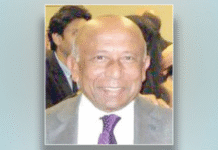
In 1830, the world population was only 1 billion. It took 100 years for this number to double. But within a span of only 30 years, in 1960, global population reached 3 billion. Since then, the world population estimate started to spike exponentially, and it took hardly 15 years to reach the 4 billion mark, by 1975. The global population reached 6.8 billion in 2009, and it is estimated to reach 9.1 billion in 2050—with an increase of 47 percent over this period—showing an average addition of approximately 82 million people every year since 1930. This pace of increase is naturally disconcerting for social scientists and demographers globally.
We also have statistical evidence showing that 80 percent of the total population of the planet comes from lower-income countries in Asia and Africa, and the growth rate of these countries is also comparatively higher than that of the developed nations. Demographic pressure and poverty go hand in hand. The question is, why is the population of the underdeveloped nations increasing so rapidly compared to the developed nations? We also have to keep in mind that the worldwide growth rate of population at 1.8 percent does not apply to people living in rural areas and those living in urban slums and low-cost areas in the Third World countries. Although the overall population growth throughout the world as well as in a few developing countries decreased considerably in the recent past, this trend of slower growth has not been seen in many poor and underdeveloped countries.
In fact, most of these countries have already been overburdened with excessive population pressure and its concurrent economic pressure. For example, Bangladesh has a total population of 165 million living in an area of 147,570 sq. km. As such, it remains the most densely populated country in the world, facing tremendous pressure on agricultural land and settlement. Although the economy recorded a sizable growth due to government initiatives in the last few years, there are reasons to fear that the country will not be able to attain its wider development goal unless its demographic pressure is not overcome through appropriate social and human development. It may not be able to show real progress unless it attends to other indicators of development, such as environmental protection, healthcare facilities, decreasing pollution, minimising the income gap, etc. Economist Amartya Sen argues that development entails a set of linked freedoms relating to social and human progress and rights which are essential elements of real development. That makes it imperative for all countries of the world, including the Third World nations of Asia and Africa, to pay equal attention to the social crisis besides the economic one.
In the coming days, food crisis and economic hardship for these countries may reach a critical point. In a recent report, it has been mentioned that due to desertification, cropland loss, water scarcity, and resource depletion, food production throughout the world could be as much as 25 percent less than the projected demand for it by the year 2050. Another report estimates that the demand for food is expected to increase by 60 percent by 2050. The reason for this is undeniably the population growth. There are multifarious effects of a fast population growth and the most noticeable victim of it is the agricultural sector. Since land is the principal source of food production, it is directly affected by population pressure, which is also true for a country like Bangladesh.
The richest countries of Europe, the United States and Canada have a growth rate of less than 1 percent while the growth rate in the African countries still continues at 2.4 percent. We know that world population is increasing at the rate of 1.2 percent, yet the doubling time for population growth in many underdeveloped nations is estimated to be 25-37 years. In 1930, Bangladesh had a population of 35.5 million. It reached 153.5 million in 2008, despite the fact that the country has succeeded enormously in reducing its birth rate. The Father of the Nation, Bangabandhu Sheikh Mujibur Rahman, was reportedly terrified at the prospect of a huge demographic pressure on his country. In a speech in 1972, he expressed his concern over this matter and warned by saying that “if we are not careful, our population might reach 150 million in future, creating enormous problems in terms of our food and nutrition.” Now, we have already crossed that mark, creating an unsustainable environment for us all. This also goes for many other Third World countries. It is believed that many of these countries will face immense problems in terms of managing their food and nutrition intake, if the population increase is not halted immediately.
It so happens that people sometimes get unrealistically inspired by the cornucopian viewpoints about agricultural growth being supported by high technology which, they believe, can be effective in reducing hunger and malnutrition. Despite the increase of food production through technification of agriculture, we must think about the catastrophic destruction of our valuable land. Today, we hardly think about the destruction of land fertility and damage to soil which occurs due to overuse of chemical fertilisers and modern forms of extensive irrigation. The bottom-line is, if we want a better life free from diseases and with proper access to food and nutrition, we have to keep our population size at an optimum level. This has to be the priority going forward.
Prof Dr AHM Zehadul Karim teaches at the Department of Anthropology, Jagannath University, Dhaka.









